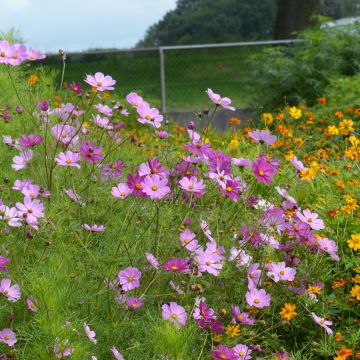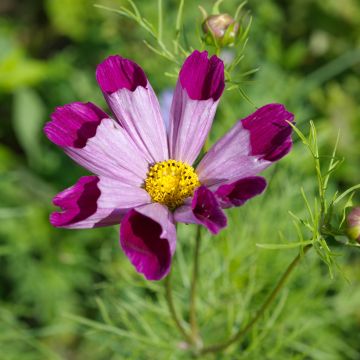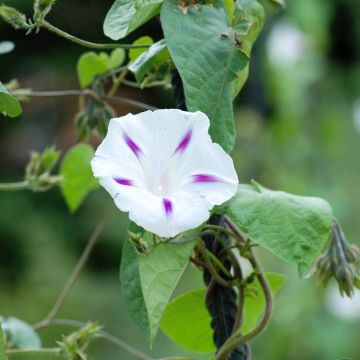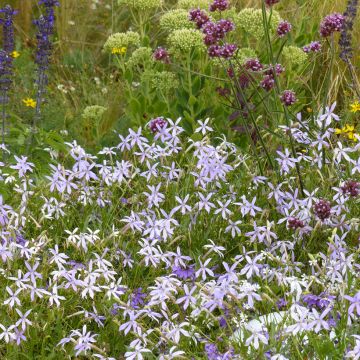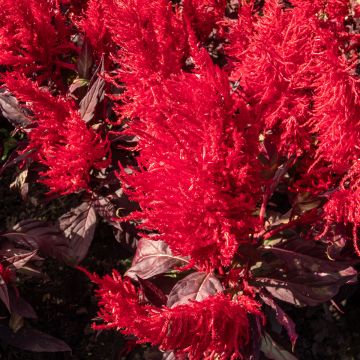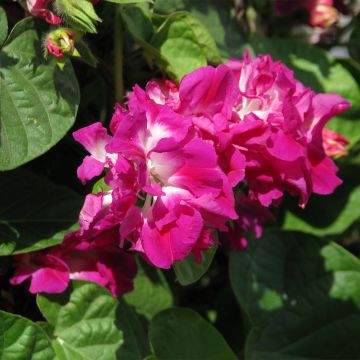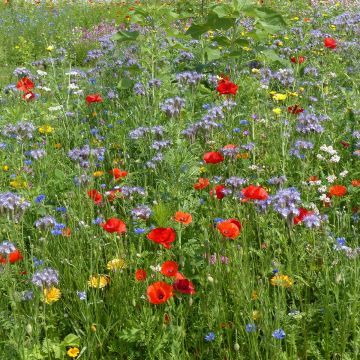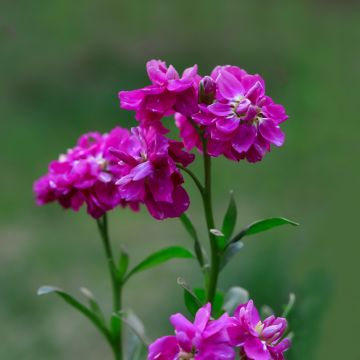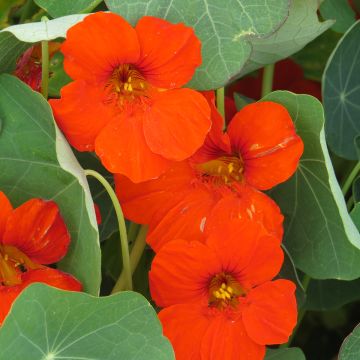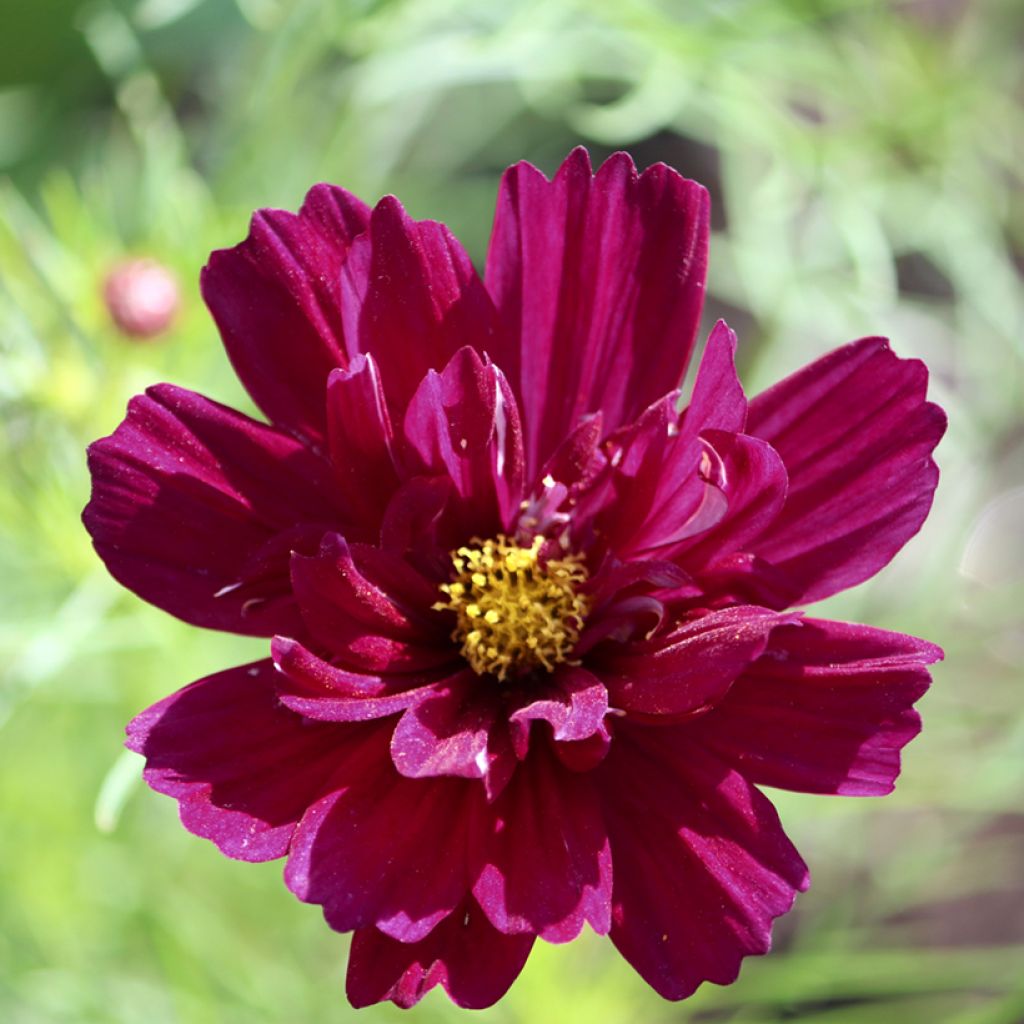

Cosmos Fandango seeds - Cosmos bipinnatus
Cosmos Fandango seeds - Cosmos bipinnatus
Cosmos x bipinnatus Fandango
Garden Cosmos, Mexican Aster
This plant carries a 6 months recovery warranty
More information
We guarantee the quality of our plants for a full growing cycle, and will replace at our expense any plant that fails to recover under normal climatic and planting conditions.
Does this plant fit my garden?
Set up your Plantfit profile →
Description
Cosmos 'Fandango' is a variety of Cosmos bipinnatus distinguished by its magnificent semi-double, purple flowers with feathery petals of satin texture. Stunning in summer bouquets, both modern and retro, its flowers also shine in sunny beds. To prolong flowering, regularly remove faded flowers. This variety has been awarded for its exceptional beauty.
Cosmos bipinnatus 'Fandango' is an annual plant of the Asteraceae family. The species is native to tropical and subtropical regions of Central America, especially Mexico. This 'Fandango' variety is a recent cultivar, but its aesthetics recall cosmos from gardens of the past, with an additional collar of petals around the golden centres. Plants reach a height of 60 to 80 cm, forming compact and well-branched clumps.
The flowers of Cosmos 'Fandango' are true botanical works of art. Their feathery, deep purple petals are more red at the base and surround a highly contrasting golden heart. Flowering extends from June to the first frost. The tender green foliage is fine and delicate.
Cosmos 'Fandango' finds a place in country beds or in a flowery meadow. In beds, it pairs perfectly with perennial plants such as Echinacea purpurea, whose pink tones harmonise with the red-violet nuances of the cosmos. Also, associate it with grasses like Pennisetum alopecuroides 'Black Beauty', its light dark-coloured spikes add movement to the whole. Rudbeckia fulgida 'Goldsturm', with its yellow flowers, will complete the scene. In a pot, this cosmos can be accompanied by silver-leaved plants like Helichrysum petiolare 'Silver' for a harmonious and refined ensemble.
The ecological gesture: Sowing a honey-producing plant like Cosmos in your garden will attract pollinating insects throughout the summer. At the end of the season, let the last flowers produce their seeds which are particularly appreciated by birds. You will thus encourage them to visit your garden and play an important role in its ecosystem.
Report an error about the product description
Flowering
Foliage
Plant habit
Botanical data
Cosmos
x bipinnatus
Fandango
Asteraceae
Garden Cosmos, Mexican Aster
Coreopsis formosa, Bidens formosa
Cultivar or hybrid
Other Cosmos seeds
Planting and care
For cosmos 'Fandango', you have two sowing methods:
Sow under cover in March-April followed by pricking out into pots before final planting in your beds after the frosts.
Direct sowing in May (after the last frosts) followed by transplanting at a distance of 30 cm or simply thinning out excess seedlings. It takes between 80 and 90 days between sowing and flowering. During the summer months, removing faded flowers will promote renewal and extend flowering until autumn.
Sowing period
Intended location
This item has not been reviewed yet - be the first to leave a review about it.
Flower seeds
Haven't found what you were looking for?
Hardiness is the lowest winter temperature a plant can endure without suffering serious damage or even dying. However, hardiness is affected by location (a sheltered area, such as a patio), protection (winter cover) and soil type (hardiness is improved by well-drained soil).

Photo Sharing Terms & Conditions
In order to encourage gardeners to interact and share their experiences, Promesse de fleurs offers various media enabling content to be uploaded onto its Site - in particular via the ‘Photo sharing’ module.
The User agrees to refrain from:
- Posting any content that is illegal, prejudicial, insulting, racist, inciteful to hatred, revisionist, contrary to public decency, that infringes on privacy or on the privacy rights of third parties, in particular the publicity rights of persons and goods, intellectual property rights, or the right to privacy.
- Submitting content on behalf of a third party;
- Impersonate the identity of a third party and/or publish any personal information about a third party;
In general, the User undertakes to refrain from any unethical behaviour.
All Content (in particular text, comments, files, images, photos, videos, creative works, etc.), which may be subject to property or intellectual property rights, image or other private rights, shall remain the property of the User, subject to the limited rights granted by the terms of the licence granted by Promesse de fleurs as stated below. Users are at liberty to publish or not to publish such Content on the Site, notably via the ‘Photo Sharing’ facility, and accept that this Content shall be made public and freely accessible, notably on the Internet.
Users further acknowledge, undertake to have ,and guarantee that they hold all necessary rights and permissions to publish such material on the Site, in particular with regard to the legislation in force pertaining to any privacy, property, intellectual property, image, or contractual rights, or rights of any other nature. By publishing such Content on the Site, Users acknowledge accepting full liability as publishers of the Content within the meaning of the law, and grant Promesse de fleurs, free of charge, an inclusive, worldwide licence for the said Content for the entire duration of its publication, including all reproduction, representation, up/downloading, displaying, performing, transmission, and storage rights.
Users also grant permission for their name to be linked to the Content and accept that this link may not always be made available.
By engaging in posting material, Users consent to their Content becoming automatically accessible on the Internet, in particular on other sites and/or blogs and/or web pages of the Promesse de fleurs site, including in particular social pages and the Promesse de fleurs catalogue.
Users may secure the removal of entrusted content free of charge by issuing a simple request via our contact form.
The flowering period indicated on our website applies to countries and regions located in USDA zone 8 (France, the United Kingdom, Ireland, the Netherlands, etc.)
It will vary according to where you live:
- In zones 9 to 10 (Italy, Spain, Greece, etc.), flowering will occur about 2 to 4 weeks earlier.
- In zones 6 to 7 (Germany, Poland, Slovenia, and lower mountainous regions), flowering will be delayed by 2 to 3 weeks.
- In zone 5 (Central Europe, Scandinavia), blooming will be delayed by 3 to 5 weeks.
In temperate climates, pruning of spring-flowering shrubs (forsythia, spireas, etc.) should be done just after flowering.
Pruning of summer-flowering shrubs (Indian Lilac, Perovskia, etc.) can be done in winter or spring.
In cold regions as well as with frost-sensitive plants, avoid pruning too early when severe frosts may still occur.
The planting period indicated on our website applies to countries and regions located in USDA zone 8 (France, United Kingdom, Ireland, Netherlands).
It will vary according to where you live:
- In Mediterranean zones (Marseille, Madrid, Milan, etc.), autumn and winter are the best planting periods.
- In continental zones (Strasbourg, Munich, Vienna, etc.), delay planting by 2 to 3 weeks in spring and bring it forward by 2 to 4 weeks in autumn.
- In mountainous regions (the Alps, Pyrenees, Carpathians, etc.), it is best to plant in late spring (May-June) or late summer (August-September).
The harvesting period indicated on our website applies to countries and regions in USDA zone 8 (France, England, Ireland, the Netherlands).
In colder areas (Scandinavia, Poland, Austria...) fruit and vegetable harvests are likely to be delayed by 3-4 weeks.
In warmer areas (Italy, Spain, Greece, etc.), harvesting will probably take place earlier, depending on weather conditions.
The sowing periods indicated on our website apply to countries and regions within USDA Zone 8 (France, UK, Ireland, Netherlands).
In colder areas (Scandinavia, Poland, Austria...), delay any outdoor sowing by 3-4 weeks, or sow under glass.
In warmer climes (Italy, Spain, Greece, etc.), bring outdoor sowing forward by a few weeks.





































